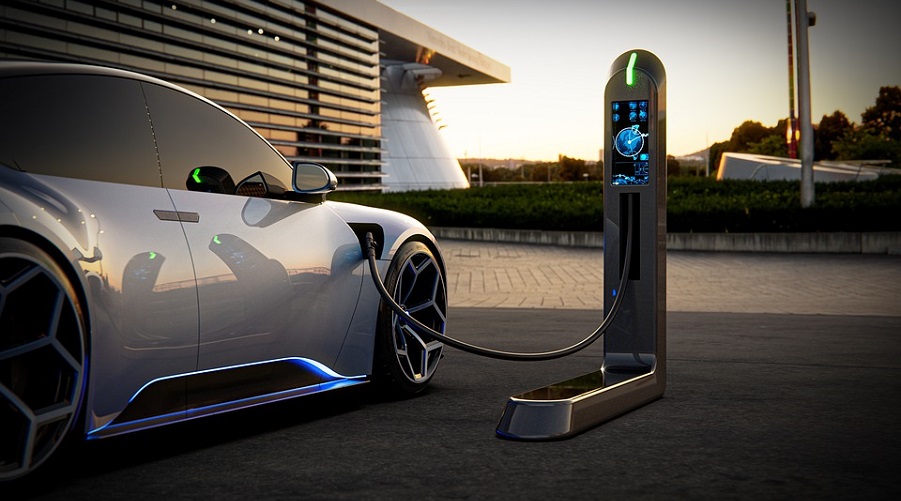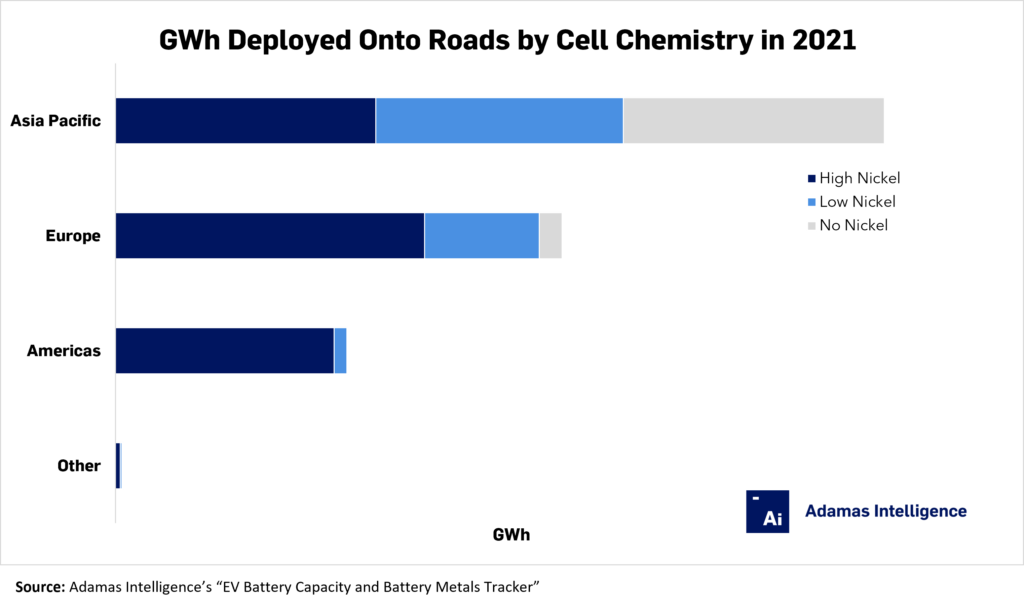
Global EV sales jumped 83% year-on-year in 2021, insights from Adamas Intelligence show.
According to the market analyst, over 98% of all watt-hours deployed last year went into plug-in electric vehicles alone, both battery electric vehicles (BEVs) and plug-in hybrid electric vehicles (PHEV).
Adamas Intelligence’s report also points out that 2021 saw a record 286.2 GWh deployed onto roads in the batteries of new passenger EVs globally, a 113% leap over 2020.
The firm’s dossier mentions that 54% of battery capacity deployed onto roads globally in new plug-in electric vehicles was powered by high nickel cathode chemistries or NCM 6-, 7-, 8-series, NCA, and NCMA; 26% by low nickel cathodes or NCM 5-series and lower, and 20% by no nickel cathodes, primarily LFP.
“Regionally, deployment of high nickel chemistries was most prevalent in the Americas on the back of Tesla, VW, Ford, Hyundai and others, while the deployment of no nickel cells was most prevalent in Asia Pacific, and particularly China, on the back of Tesla, BYD, SGMW, Great Wall and a long list of others,” the document states.
“Like the Americas, Europe saw minuscule deployment of no nickel cells onto roads in 2021 but unlike the Americas, saw a greater proportion of its watt-hours deployed powered by low nickel cells, albeit high nickel still dominated the region.”
Adamas’ paper highlights that while no-nickel chemistries captured one-fifth of the global plug-in electric vehicle market in 2021 by watt-hours deployed, they were present in nearly one-quarter of all vehicles sold.

The researcher’s data show that in Asia Pacific specifically, no-nickel chemistries seized 34% of the plug-in electric vehicle market by battery capacity deployed onto roads in 2021 albeit no-nickel cells were present in over 41% of all vehicles sold.
“This disparity stems from the smaller sales-weighted average pack capacities of LFP-powered EVs relative to low and high nickel alternatives,” the report reads. “Given the different chemistries preferred in each region, the demand for lithium chemical precursors also varied.”
Adamas found that in the Americas, over 86% of all lithium carbonate equivalent (LCE) units deployed onto roads in 2021 were in the form of lithium hydroxide. In Europe, this proportion amounted to 51% and in Asia Pacific 30%. In the research firm’s view, these results speak to the regional preferences for high, low and nickel chemistries.
At the global level, 45% of all LCE units deployed onto roads globally in 2021 were in the form of lithium carbonate and 55% lithium hydroxide.
Overall, the market analyst estimated that a record 173,641 tonnes of LCE were deployed onto roads globally in newly sold passenger EVs in 2021, up 110% year over year.